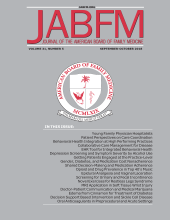To the Editor: Gillette et al analyze how PSA screening for age 70 and over, a low-value service, is being implemented in the United States.1
For PSA screening, the United States Preventive Service Task Force (USPSTF) assigns grade C to those aged 55 to 70 and grade D to all other age groups. By definition, D is not recommended to be done, with solid evidence that the harm outweighs the benefit. In other words, Grade D means that the service should not be performed because it will cause harm to the subject. In addition, C is that the service can not be recommended because insufficient level of certainty of evidence that the benefits outweigh the harms, that is, experimental medicine rather than evidence based medicine. So, in accordance with the Declaration of Helsinki, it is a condition of implementation that subjects are fully informed about the benefits and harms and consents to undergo the service. Grade C is uncertain or zero value and Grade D is negative value. Therefore, if we apply this USPSTF grade to the definition of The Centre for Value-Based Insurance Design (V-BID), PSA screening for aged 55 to 70, grade C, would barely qualify as low value care, but would be out of the question for aged 70 and older, grade D. The authors are not responsible, though, as the V-BID center describes PSA screening for aged 70 and over as low-value care. However, true to the authors' original research intention is a study to analyze how PSA screening for aged 55 to 70 is actually performed in the US.
The authors states, “Currently, it is thought that PC screening confers the most benefit between the ages of 55 to 69 years with the lowest risk of overdiagnosis and overtreatment” In fact, the USPSTF considers PSA screening for aged 55 to 70 as a small possible benefit, many harms (overdiagnosis and complication of tests and treatments), which is essentially a negative value. The USPSTF upgraded from Grade D to C in 2018 but remains Grade D in content.2 Although there seems to be a negligible benefit when evaluated in terms of cancer-specific mortality, early detection and treatment of prostate cancer does not lead to an improvement in overall mortality because of the overwhelming frequency of other-cause mortality. The only RCT that showed the benefit had an age range of 55 to 70 years, so PSA screening for that age-group was assigned Grade C and the rest were assigned Grade D. The problem of overdiagnosis remains the same for all ages. Overdiagnosis does not mean that there are too many cases diagnosed as cancer, but that the expression “cancer” is overdone. Even if the number of cases can be reduced by excluding indolent cases, this does not mean that the situation will improve. Overdiagnosis is caused by problems with the diagnostic tests: pathologic examination.2 In addition, the USPSTF also states that the decision to perform PSA screening should be an individual.1 This means that PSA screening for aged 55 to 70 should be funded by private health insurance or research funding and not by public health insurance. The VHA and Medicare in the US are also public to some extent. It is possible that being covered by these public insurances may mislead subjects into believing that there is evidence of benefit with regard to PSA screening. Strictly speaking, this violates the Declaration of Helsinki.
The authors state as limitation, “First, we only examined primary care PC screening, so we did not include urologists’ PC screening behaviors.” In practice, screening by urologists would be still very active. Their conclusions are remarkably modest.
Notes
To see this article online, please go to: http://jabfm.org/content/36/3/521.full.







